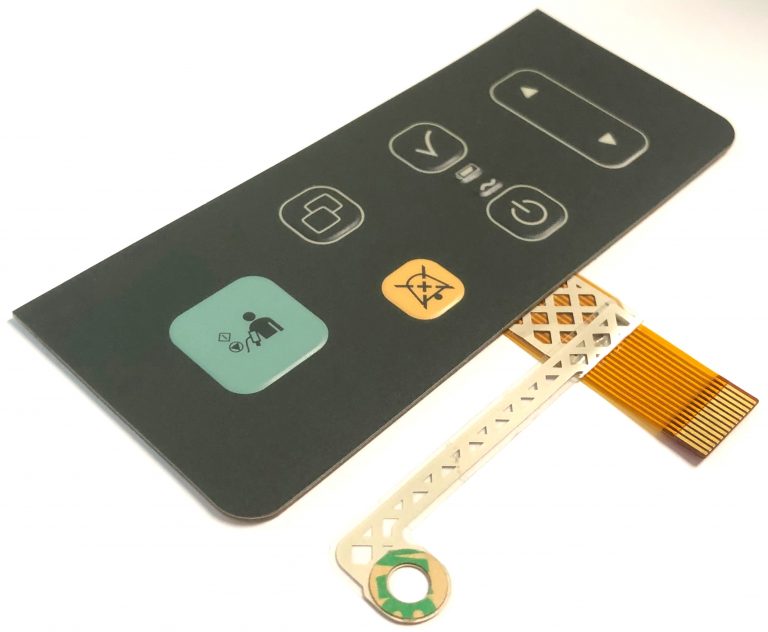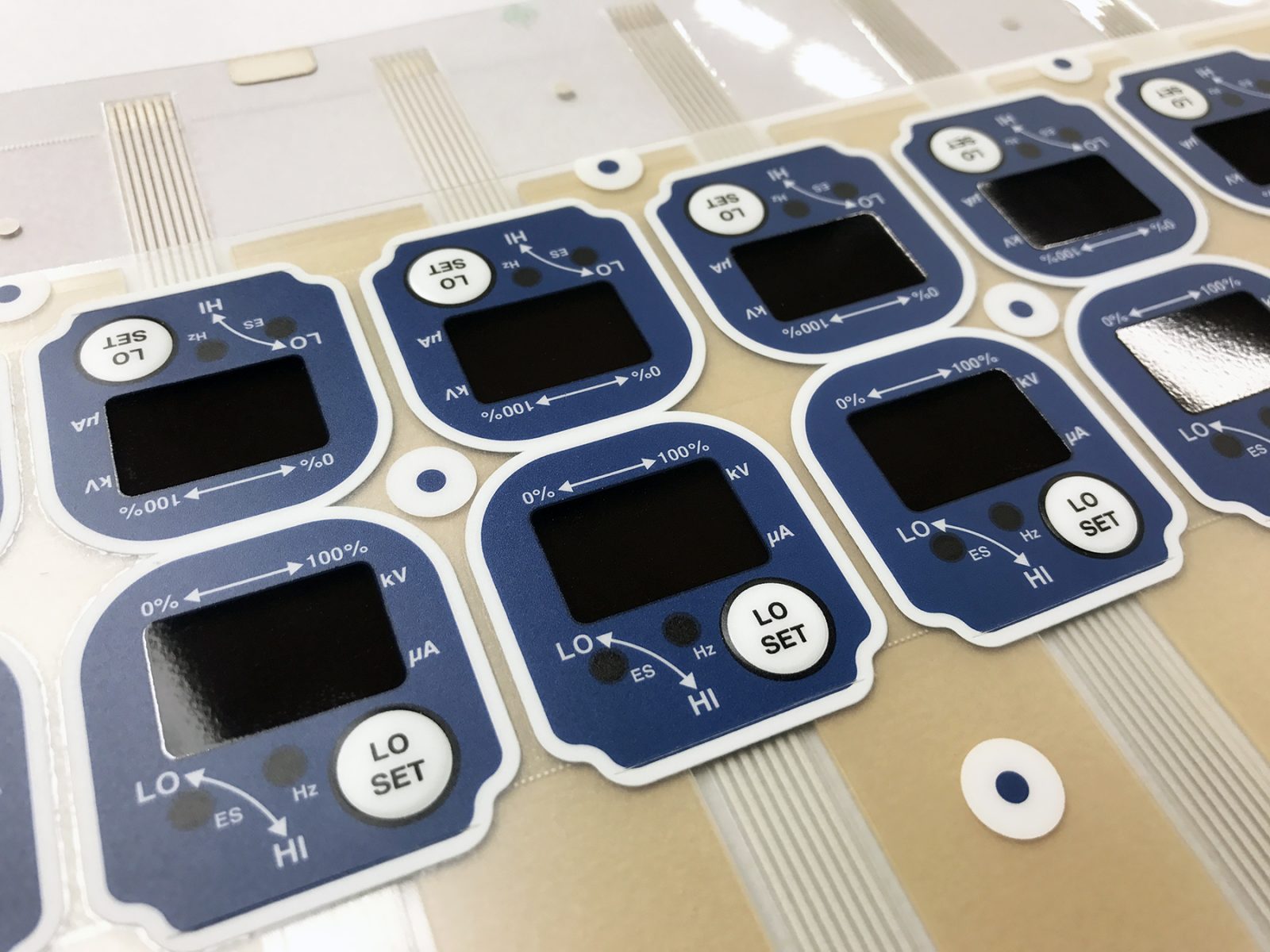Everything About Membrane Layer Switch: Comprehending Its Style and Capability
When you believe regarding the control interfaces in modern-day tools, membrane layer buttons usually come to mind. Let's discover what sets membrane switches over apart from other control systems.
What Are Membrane Buttons?

Their seamless nature makes them very easy to tidy and immune to dust and moisture, an essential function in numerous environments. Membrane switches can likewise be tailored regarding form, dimension, and graphics, allowing manufacturers to produce unique interfaces tailored to particular items. Plus, they're light-weight and thin, which aids in reducing the overall mass of devices. Overall, membrane layer buttons play a substantial duty in improving individual experience across a large range of applications.
Exactly How Membrane Switches Work
When you push a secret on a membrane layer button, it activates a simple yet reliable device. The leading layer, frequently constructed from flexible material, pushes down onto a conductive layer underneath it. This action bridges the gap between conductive traces, completing an electrical circuit. As soon as the circuit shuts, it sends a signal to the device's controller, which analyzes your input.
You'll notice that the responsive responses differs based upon the switch design, providing either a soft click or a much more pronounced feedback. As soon as you launch the trick, the membrane layer go back to its original placement, resuming the circuit and stopping the signal. This process happens virtually instantly, guaranteeing a responsive individual experience.
Membrane buttons are preferred because of their sturdiness and resistance to dust and dampness, making them excellent for different applications, from house appliances to clinical devices. Comprehending this procedure helps you appreciate their extensive use.
Key Components of Membrane Switches
Recognizing the crucial elements of membrane switches is fundamental for realizing their performance and layout. The protective layer guards versus ecological factors and put on, expanding the switch's lifespan. By comprehending these components, you'll get understanding right into just how membrane switches operate and their value in numerous applications.
Materials Used in Membrane Layer Change Design
The performance and sturdiness of membrane switches over heavily rely on the products used in their design. You typically come across polyester and polycarbonate as main substratums due to their outstanding toughness and adaptability. These products resist scrapes and chemicals, making them excellent for requiring environments.
The conductive layers often use silver or carbon, picked for their reliability and conductivity. membrane switch manufacturer. Silver gives premium efficiency, while carbon is an affordable alternative. For the overlay, you could consider a matte or shiny finish, depending on your visual requirements and user experience
Adhesives play an essential role too; they bond layers firmly and ensure long life. Ensure to select adhesives that stand up to environmental variables like temperature level and humidity. Lastly, don't overlook the value of a good printing strategy for graphics, as it enhances both performance and aesthetic allure. Selecting the appropriate materials will guarantee your membrane button stands the examination of time.
Design Factors To Consider for Membrane Layer Buttons
While creating membrane layer buttons, it's essential to take right into account numerous aspects that affect their functionality and customer experience. Beginning by focusing on the design and button size; make certain they're instinctive and simple to navigate.
Do not forget the graphic style; clear labeling and color comparison are substantial for visibility. Confirm your design accommodates environmental aspects, like moisture or temperature level variations, which could affect performance. Keep in mind the importance of testing models with actual users to gather responses and make necessary modifications. This iterative procedure aids you improve the style, confirming it satisfies both useful and aesthetic requirements effectively. By thoroughly thinking about these aspects, you'll develop a membrane switch that improves use and contentment.
Applications of Membrane Layer Switches
Membrane layer buttons are flexible elements located in numerous applications, from industrial equipment to consumer electronics. You'll see their influence in equipments official website that call for durable interfaces and in gadgets that take advantage of smooth designs. Understanding these applications assists you value the performance and usefulness of membrane layer switches in daily innovation.
Industrial Tools Usage
When you're looking to boost the capability of commercial equipment, membrane buttons provide a reliable service that integrates sturdiness with easy to use layout. These buttons are excellent for harsh environments, offering resistance to dirt, moisture, and chemicals. Accept membrane layer switches to enhance your operations and boost overall performance.
Customer Electronic Devices Integration
In the domain name of consumer electronics, membrane switches play a necessary role in boosting user communication and tool functionality. You'll find them in devices like microwaves, push-button controls, and video gaming consoles, offering a seamless means to communicate with modern technology. Their sleek style enables easy combination into various items, making controls user-friendly and easy to use. With their ability to integrate graphics and backlighting, you can appreciate a modern-day visual that complements the device's overall appearance. Membrane switches likewise assure toughness and resistance to dirt and dampness, extending the life expectancy of your electronics. By choosing membrane layer buttons, you boost not just the performance but additionally the design of your devices, making day-to-day interactions smooth and delightful.
Advantages and Disadvantages of Membrane Layer Buttons
While membrane layer switches offer a variety of advantages, they likewise come with some drawbacks that you need to take into consideration. One considerable benefit is their compact layout, making them optimal for space-constrained applications. They're also cost-effective, giving a long lasting service with a low manufacturing expense. Furthermore, their smooth surface is very easy to clean, enhancing health in atmospheres like medical facilities.

Nevertheless, there are disadvantages. Membrane layer switches can have a shorter life-span contrasted to mechanical buttons, specifically under hefty usage. They can additionally be much less responsive, which might affect user comments throughout procedure. If damaged, repairing them can be challenging and often needs total substitute. Inevitably, their level of sensitivity to extreme temperatures and environmental problems might limit their effectiveness in specific settings. Balancing these benefits and drawbacks will help you determine if membrane layer switches are the best suitable for your project.
Often Asked Questions
The Length Of Time Do Membrane Layer Switches Over Commonly Last?
Membrane changes typically last in between 5 to ten years, depending upon usage and ecological problems. You'll want to review aspects like wear, direct exposure to wetness, and temperature fluctuations to gauge their longevity properly.
Can Membrane Layer Changes Be Personalized for Specific Styles?
Yes, you can tailor membrane switches to fit details layouts (membrane switch manufacturer). You'll have the flexibility to pick colors, Recommended Site shapes, and designs that match your project's demands, guaranteeing they blend perfectly with your total visual
What Is the Expense Range for Membrane Switch Production?
The price array for membrane layer button production commonly drops in between $1 and $10 each, depending upon aspects like design intricacy, quantity, and materials. You can get quotes from manufacturers to locate the very best choice.

Are Membrane Switches Water-proof or Resistant?
Membrane switches can be designed to be water-proof or immune, depending on materials utilized and building and construction techniques. If you need them for wet settings, ensure you specify those demands throughout the style process.
Exactly How Do Membrane Layer Switches Over Contrast to Traditional Buttons?
Membrane layer buttons are Look At This typically thinner and much more flexible than typical switches, providing a smooth style. They're typically easier to cleanse and incorporate, however may not offer the tactile responses you're utilized to with mechanical choices.
Final thought
